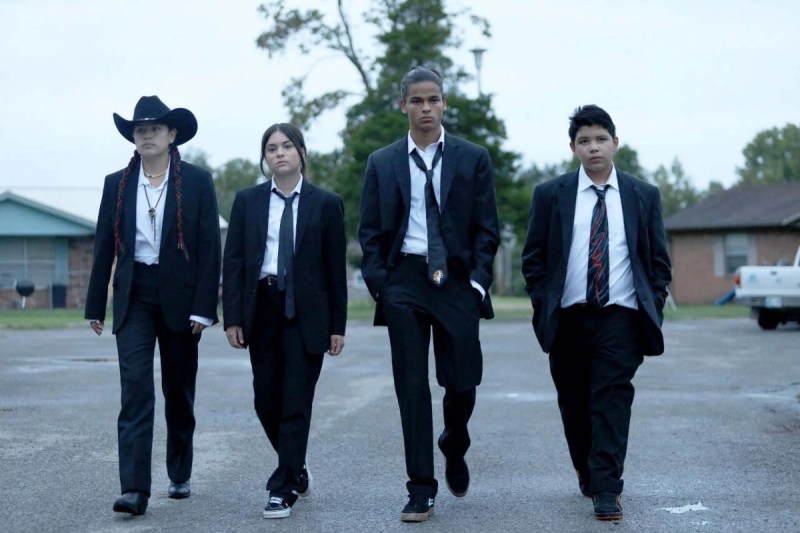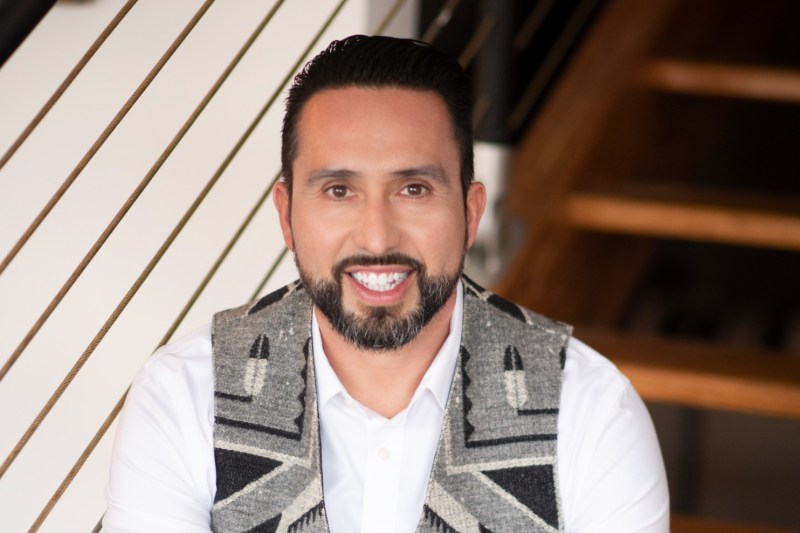Native Americans don’t have property rights in the United States. The Indigenous people who populated this land for at least 20,000 years have no claim to the ground they stand on. Instead, they’re viewed as a protected people, with the U.S. keeping watch on and ownership of reservation borders. (Seems like the government and speculators might be watching more for raw commodities, but that’s only perspective based on hundreds of years of policy history.)
How then are the dozens of Native tribes people allowed to gain an equitable foothold? One way that’s flowered has grown from the movie industry’s fertile loam. The true-crime thriller Dark Winds, streaming on Amazon Prime Video with an AMC subscription, just saw a speedy season 2 renewal. This follows the success of Reservation Dogs (FX/Hulu), Rutherford Falls (Peacock), and Yellowstone (Paramount Plus).
These shows not only star Native actors, but include the people behind the camera, Native directors, writers, and producers. Joshua Arce, president and CEO of the Partnership With Native Americans (PWNA) nonprofit, appreciates not only the opportunity, but also the prominence that Native American shows bring to Native communities in this country.

“One of the most important challenges that we have to deal with today, as Native people, is continued visibility,” Arce told The Manual. “There is this notion or ideology that we don’t exist anymore.”
Arce spent 20 years pursuing tribal advancement in IT, law, leadership, cultural preservation, child welfare, and more. Now, with screens tuned to Native dramas, there’s growing awareness of Native America.
“These books and shows, movies, pop culture — we’ve lived in that for decades,” Arce said. “There’s a saying that if you’re not at the meeting, you’re on the menu. It’s imperative that we have representation in media.”
Arce indicates that not only can this representation open more film doors, but it can also pique an appreciation and interest in Native culture, which helps illuminate Native living conditions. The harsh reality is that many Native people don’t have access to the Wi-Fi or even electricity necessary to stream these hit shows. While a wealthy nation tunes in, Natives struggle to secure food, access clean water, and receive proper health care and adequate housing. And COVID-19, of course, has only exacerbated these issues.
“Many people still have these very archaic beliefs about Native Americans; that we all receive government entitlements, that we receive free housing, that we receive free education, free health care,” Arce said. “That can adversely impact the investments in Indian Country. What I hope this does is humanize us more and make us feel more like your neighbor next door.”
There are many recognizable similarities between most cultures, like an enduring pride in the place and the people that you came from.
“Once you recognize your role in the family, there are responsibilities that go along with that. You’re not adrift,” Arce said. “Through the star beings, through all our relations, you are designed for a purpose. There is an intention for your life.”
This is especially true for young adults whose brains are just being shaped and looking for the purpose in life.
“That’s pivotal to young people, to overall direction — that feeling of being lost and having no guidance,” Arce said. “You’ve already been born for something. It’s like your timestamp when those things align.”
It’s these young people who are not only very much a part of successful shows flowing from Native lands, but who are connecting with the world via creative content.
“The number of opportunities that have opened up through arts initiative has really been eye popping,” Arce said. “It makes sense because we’re natural storytellers.”

Still, there’s a stark reality on reservations beyond entertainment. The numbers are staggering. About 90,000 American Indian families are homeless and 40% of homes are substandard, while 30% of Navajo homes (in the Southwest) lack running water. One in four Native American families experiences food insecurity — the highest per capita in the U.S. Only 16% of American Indians have a college degree.
The PWNA works to supply immediate needs for Natives in need — food, water, hygiene products — in addition to sowing long-term solutions.
“We’re trying to empower communities and build them up with food sovereignty initiatives, gardening programs, domestic violence and shelter interventions, the types of things that will make substantive changes.”
The challenges go on, but so do the Native people.
“We’re able to tell the stories about the terrors and the hauntings and the tragedies,” Arce said. “It also allows us to show how happy of a people we can be, how productive, how we love to dance, how we love to sing, how we love community.”
With streaming platforms, everyone can catch a glimpse of the drama, the struggle, the joy, and the ultimate meaning that’s shaped by the world that forms all of us.



